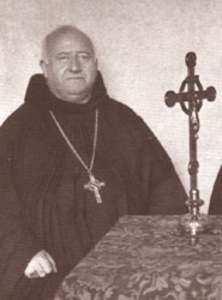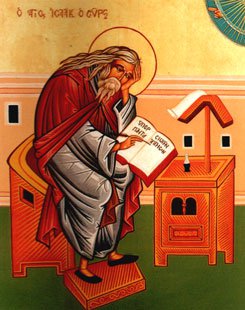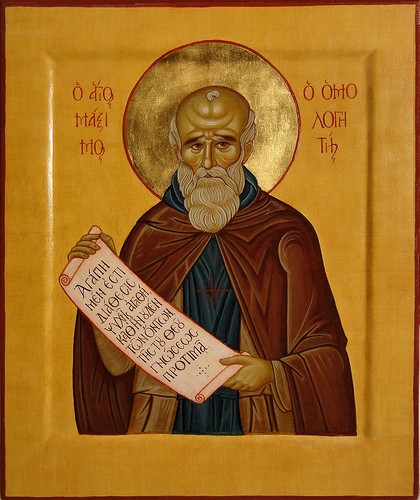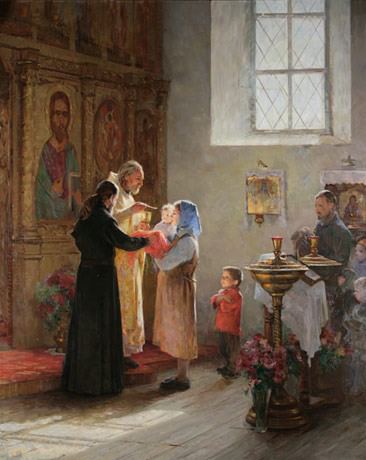As Christianity gradually became the dominant religion of the Roman empire, the relationship of the church to the wider society began to change. In particular, the bishops of important cities in the empire began to take on public responsibilities scarcely imaginable to earlier generations. Few were better suited for this new role than Ambrose (c. 339-97), who, while still a catechumen, was chosen by the local Christian community to become Bishop of Milan. His natural leadership abilities, skill in preaching, and commentaries on scripture and theology, along with Milan’s important position as an imperial residence, soon led Ambrose to be the most prominent prelate in the Latin-speaking part of the Roman world. Perhaps the most dramatic episode of Ambrose’s illustrious career is when he refused, despite the threat of violence, to give the Emperor Theodosius holy communion until the ruler had done public penance for a massacre of some civilians in Thessalonica. I will never forget the powerful painting of this by the great Peter Paul Rubens I first saw in the summer of 1983 in Vienna, and it still makes a profound impression on me.

This confrontation with Theodosius is indicative of the seriousness with which Ambrose regarded the eucharist. He wrote about the sacrament extensively in two catechetical works, “On the Mysteries” and “On the Sacraments.” Both are especially important because they contain substantial quotations from one of the earliest liturgical texts we have from the Latin church. In these instructions for those who had recently been baptized, Ambrose exudes a profound and joyful sense of the eucharist as a heavenly banquet and the renewal of our spiritual youth.

Earliest known mosaic portrayal of Ambrose
Ambrose emphasizes that Jesus is the author of the eucharist. In what would become a central trend in all subsequent Latin liturgical thought, Ambrose focuses upon the words of institution in the eucharistic prayer. Just as Christ is himself the Word of God, through which all things were made, the words of Christ at the Last Supper, when repeated by the priest in the context of the prayer of thanksgiving of the church, change the bread and wine into Christ’s body and blood:
“By what words, then, is the consecration and by whose expressions? By those of the Lord Jesus. For all the rest that are said in the preceding are said by the priest: praise to God, prayer is offered, there is a petition for the people, for kings, for the rest. When it comes to performing a venerable sacrament, then the priest uses not his own expressions, but he uses the expressions of Christ. Thus the expression of Christ performs this sacrament. What is the expression of Christ? Surely that by which all things were made. The Lord ordered, the heaven was made; the Lord ordered, the seas were made; the Lord ordered, every creature was generated. You see then how the creating expression of Christ is. If then there is so great force in the expression of the Lord Jesus, that those things might begin to be which were not, how much more creating, that those things be which were, and be changed to something else.”
Ambrose goes on to argue that just as we acknowledge Christ has the power to change every creature and the designs of nature, we must accept that he has the power to change us through our participation in the eucharist. What the tongue confesses, we must hold in our mind and heart. Thus, when we receive communion, we must never indifferently say “Amen,” but rather approach this reception as an intimate and transforming encounter with our creator and redeemer. In a provocative image, Ambrose sees receiving the body and blood of Christ as prefigured by the opening words of the Song of Songs:
“You have come to the altar; the Lord Jesus calls you — both your soul and the Church — and He says: ‘Let him kiss me with the kiss of his mouth.’ Do you wish to prepare for Christ? Nothing is more pleasing. Do you wish to do so for your soul? Nothing is more pleasant. ‘Let him kiss me.’ He sees that you are clean of all sin, because transgressions have been wiped away. Thus He judges you worthy of the heavenly sacraments, and thus invites you to the heavenly banquet.”
At this ecstatic moment, we are doing nothing less than participating in the death and resurrection of Jesus, and by our presence at Mass are preaching the gospel to the world. In proclaiming his death, we are also proclaiming the remission of sins. By admitting we are wounded and in need, we are also professing our faith that we have a remedy in Christ Jesus, who unlike the manna which perished in the desert, is both host and food for a banquet which can never end.
Quotations taken from St. Ambrose. “Theological and Dogmatic Works.” Translated by Roy J. Deferrari. Washington, D.C.: Catholic University of America Press, 1967.















